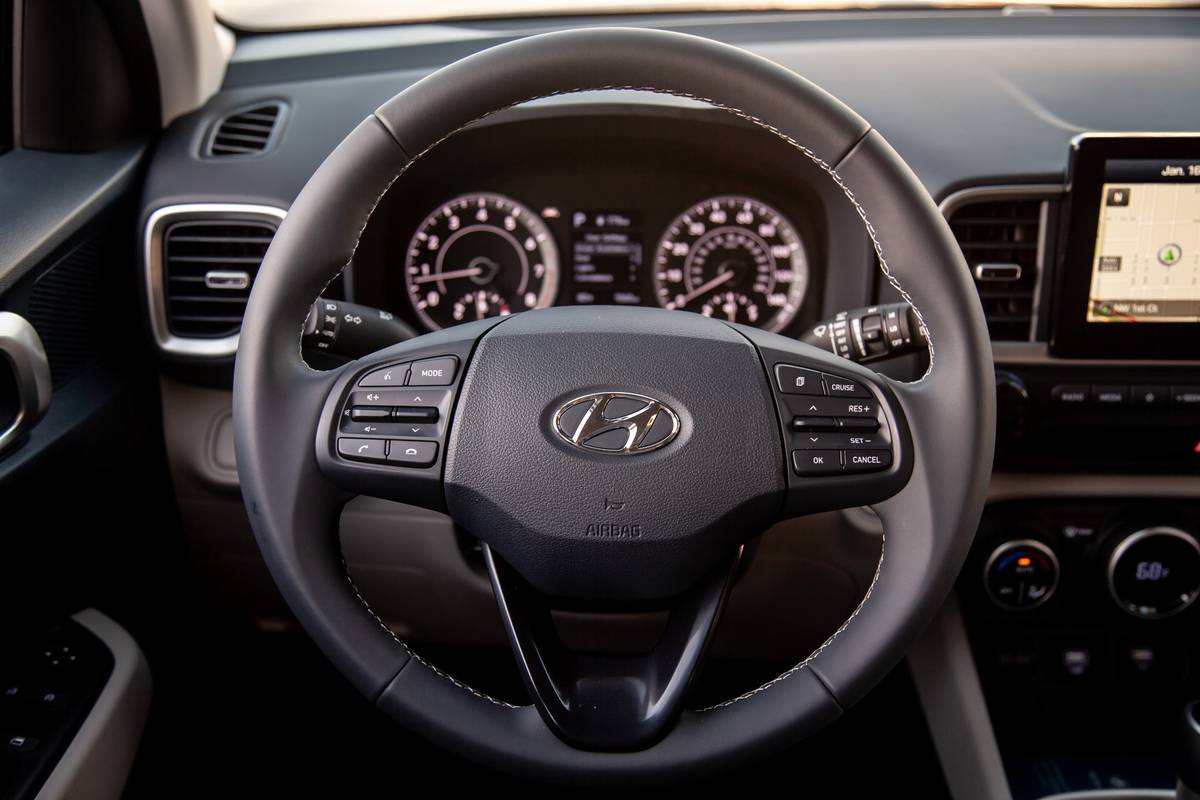What Is Lane Keep Assist?


Lane keep assist or related terms, like lane keeping assist or Active Lane Keeping Assist, are advanced driver-assistance systems designed to keep you from unintentionally drifting out of your lane. LKA typically uses a front-facing camera to identify lane markings and will automatically intervene if you drift toward or over the marking without using your turn signal. The systems use steering correction and/or selective braking on the opposite side of the vehicle to nudge you back into your lane.
Related: Which Cars Have Self-Driving Features for 2021?
LKA is built on and generally combined with a lane departure warning system that can alert you in various ways (sounds, lights or vibrations of the steering wheel or seat) that you are drifting out of your lane. LKA goes a step further by reacting with an active correction; that’s one reason we often refer to the combined systems as lane departure warning with steering or braking intervention, not the overly vague LKA. Some LKA and LDW systems also are integrated with a vehicle’s blind spot warning system to warn or nudge you if you are moving into the path of a vehicle approaching in the adjacent lane.
These are popular systems with vehicle owners. A Consumer Reports survey found 73% of owners “very satisfied” with LDW, and 74% with LKA. More important, about a third credited each system with having helped them avoid a crash.
What Lane Keep Assist Is Not
LKA is typically not the same as active lane centering, though some systems branded that way can accomplish it under certain circumstances. Generally speaking, lane centering is a more advanced capability that uses cameras, radar or other sensors (or some combination therein) to create a picture of the road and proactively use steering to keep the vehicle centered in the lane. Most such systems now work from a stop up to highway speeds, though some more basic lane-centering systems function only above or below certain speed thresholds.
Complicating matters is the fact that many such systems are also branded under the LKA umbrella: LKA on certain earlier Hyundai and Kia vehicles could center you above certain speeds (usually around 40 mph), though officials at the affiliated automakers generally won’t refer to it as lane centering. Honda’s Lane Keeping Assist System, meanwhile, is very much lane centering — again, above around 40 mph. Because operability around LKA is so vague, we at Cars.com prefer to describe individual systems by what they do: lane departure warning with steering and/or braking assist, lane centering at low or high speeds only, or lane centering from a stop all the way up to highway speeds.
When used in conjunction with adaptive cruise control, the two provide steering, braking and acceleration assistance, and the combined systems qualify as Level 2 automation on SAE International’s six tiers of vehicle autonomy (Level 0 to Level 5).
Note that both LKA and its smarter cousin, lane centering, simply provide driver assistance for convenience and safety. Even the most advanced centering systems — such as GM’s Super Cruise, which allows a driver’s hands off the steering wheel under some conditions — still require that the driver pay attention to the road and be responsible for safe operation.
The Name Game
While the capabilities and differences in these assistance systems might seem straightforward, many automakers muddy the waters by applying their own brand names to individual systems and bundles of assistance technology. A survey by AAA of 2018 model-year vehicles found 19 unique names used just for LKA. (So it goes with such technologies: Mercedes-Benz in 2018 had five names for its adaptive cruise control.)
Jeep and some other brands from parent company Stellantis, for example, lump LDW and LKA together as LaneSense on some models. LKA on some 2021 Nissan models is dubbed Intelligent Lane Intervention. Honda and its luxury brand, Acura, include the Lane Keeping Assist System — which supports lane centering in some cases, as we noted above — in their AcuraWatch and Honda Sensing tech bundles.
Some automakers also add confusion by using an umbrella term to bundle driver-assist systems but include different features for different models. Subaru’s latest EyeSight system has Advanced Adaptive Cruise Control with Lane Centering, but earlier versions of EyeSight do not — so, for example, the 2021 Crosstrek has the capability while the 2020 Crosstrek does not. And, while some Acuras with AcuraWatch have Honda’s Lane Keeping Assist System with lane centering at higher speeds, AcuraWatch for the 2021 TLX sedan and now the 2022 MDX also includes Traffic Jam Assist, which provides lane centering from a stop up to highway speeds.
The AAA survey above was part of an effort to get automakers to help shoppers by standardizing the names and functionality for advanced driver-assistance systems. The campaign was organized in 2019 by a coalition including AAA, Consumer Reports, J.D. Power and the National Safety Council. See the proposed list of terms, which omit lane centering, oddly enough. The idea is that shoppers should know what they’re buying, and drivers should know what to expect from a given system regardless of the vehicle they’re in. That’s not to say execution won’t differ between one model and the next for systems that perform lane centering or lane-departure steering assistance; it also goes without saying that road conditions, lane markings and weather can affect performance too.
Try Before You Buy
Whether you’re shopping for a new or used car, research the individual vehicle to be sure of what a given system does or doesn’t do, especially if you see a term like LKA. A good place to start is by looking up the owner’s manual online; in our experience, most manuals give a pretty clear indication of what their driver-assist systems actually accomplish. And even if you find that the vehicle has LKA, LDW or lane centering, you should make trying it part of your test drive (be sure to ask the salesperson how it works, of course, and never rely on it to avoid an accident). Not all are equally good at their jobs, and some have adjustable sensitivity that can affect how they intervene. None of these systems can work without visible lane markings, but some are quicker to shut off at brief interruptions.
And while some are unobtrusive except when needed, others can be annoying. Among things to look for: LDW that’s overly sensitive, alerting you too soon or too often; lights, sounds and other warnings that are more intrusive than you’d like; LKA that’s overly aggressive in nudging you back, leading the car to pinball between the lane markings; and lane-centering systems that are too slow to make the steering corrections that keep you centered. Remember, there’s no safety increase if the systems prove so annoying that you turn them off.
More From Cars.com:
- What Is Automatic Emergency Braking?
- What Is Nissan Safety Shield?
- What Is Toyota Safety Sense?
- What Is Honda Sensing?
- What Is Ford Co-Pilot360?
- Ford to Become Third Automaker to Offer Hands-Free Driving in the U.S.
- More Self-Driving Car Coverage
Cars.com’s Editorial department is your source for automotive news and reviews. In line with Cars.com’s long-standing ethics policy, editors and reviewers don’t accept gifts or free trips from automakers. The Editorial department is independent of Cars.com’s advertising, sales and sponsored content departments.

Former D.C. Bureau Chief Fred Meier, who lives every day with Washington gridlock, has an un-American love of small wagons and hatchbacks.
Featured stories




